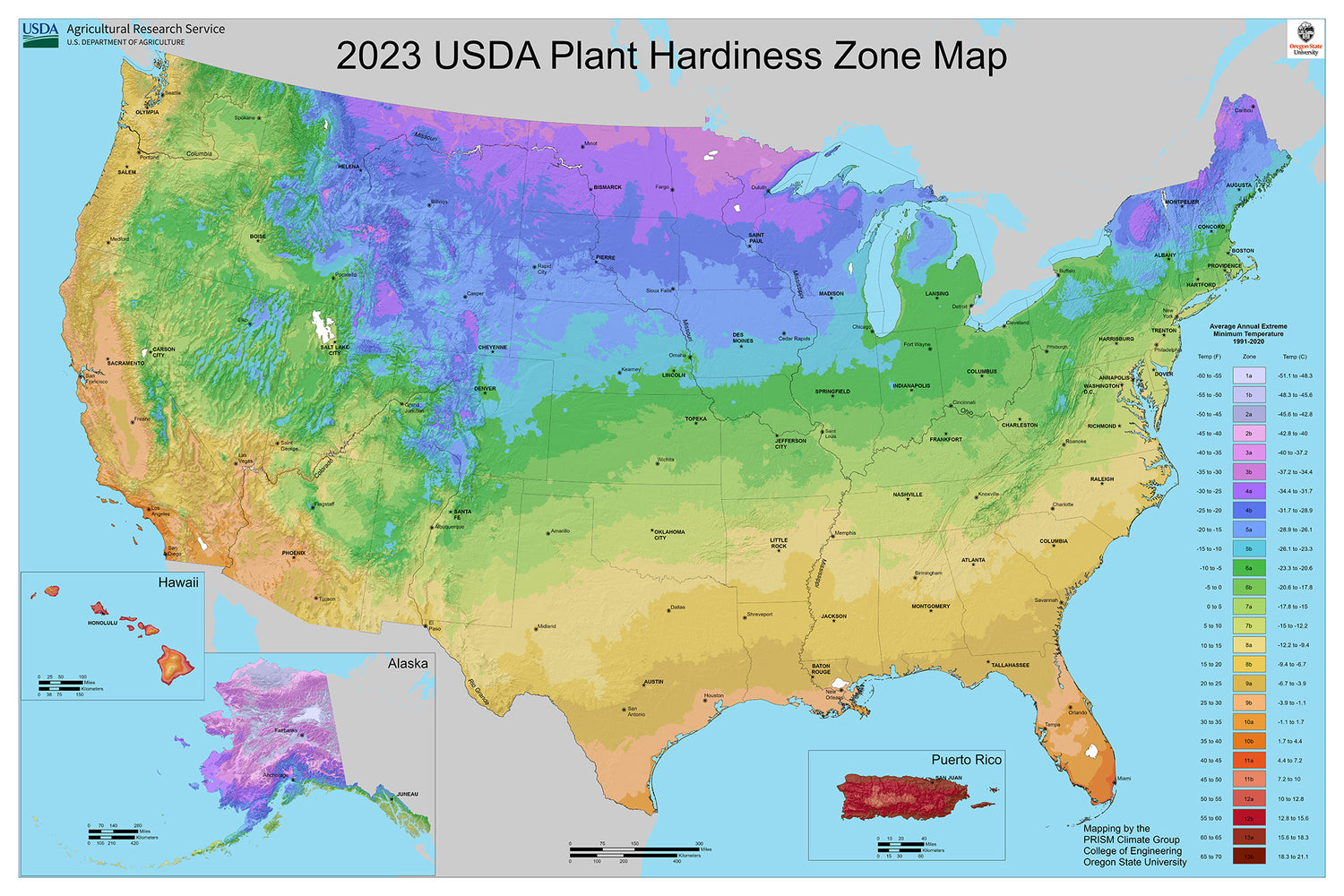Gardening is both an art and a science. A key aspect that bridges these two is the understanding of when to plant specific crops based on your geographical location. The United States Department of Agriculture (USDA) has developed a comprehensive guide, famously known as the USDA Plant Hardiness Zone Map, to help gardeners and farmers across the USA. It divides the country into zones based on the average annual minimum winter temperature. Knowing your zone can drastically improve your gardening success by helping you choose the most appropriate plants for your environment and informing you about the best planting times.
Understanding Hardiness Zones
The USDA map divides the country into 13 primary zones, each representing a 10°F temperature difference. These are further divided into sub-zones "a" and "b," which indicate 5°F increments. Zone 1 is the coldest, with temperatures down to -60°F, while Zone 13 is the warmest, reaching temperatures above 60°F. Each plant in nurseries and garden centers is tagged with a specific zone, denoting where it can grow with minimal winter protection.
The Best Time for Planting According to Your Zone
These are the coldest zones, predominantly in Alaska and the northernmost parts of the United States. The short growing seasons mean you’ll want to start your seeds indoors in late winter (February to March), so they’re ready to transplant after the last frost, which can be as late as June.
Zones 4-6:
For these zones, which cover a large portion of the central and northeastern states, starting your seeds indoors around March is advisable. You can begin transplanting hardy plants and directly sowing some vegetables as early as April, but more tender plants should wait until May or early June.
Zones 7-9:
Covering much of the southern United States, these zones experience a longer growing season. This allows for direct sowing of seeds for vegetables and flowers as early as March. However, consider planting perennials and annuals in the fall to avoid summer heat's detrimental effects.
Zones 10-13:
These tropical and subtropical zones, including parts of California, Texas, Florida, and Hawaii, offer year-round growing seasons for many plants. While planting can generally occur anytime, the best strategy is to avoid the peak summer months, using fall through spring for planting to avoid heat stress on young plants.
Tips for Gardening Success in Your Hardiness Zone
- Know Your Zone: Always check the zone information on plant tags or in plant descriptions when planning your garden.
- Consider Microclimates: Be aware of your garden’s microclimate. Areas near buildings, under trees, or on slopes may have slightly different conditions from the overall zone.
- Amend Your Soil: Improve your soil health by adding compost or other organic matter. Healthy soil can help plants tolerate less-than-ideal conditions better.
- Water Wisely: Learn the water needs of your plants. Over or under-watering can stress plants, making them more susceptible to disease and weather extremes.
- Plan for Perennials: Invest in perennials that will come back year after year, suited to your zone for long-term gardening satisfaction.
- Embrace Seasonal Planting: Understanding that each plant has its preferred season will go a long way in ensuring the success of your garden.
The USDA Plant Hardiness Zone Map is a fundamental tool for all gardeners across the USA, aiming to optimize planting times and maximize the health and yield of their gardens. By respecting the rhythms of nature and the specific needs of your region, you can create a beautiful and productive garden tailored to your local environment. Happy gardening!






Leave a comment
This site is protected by hCaptcha and the hCaptcha Privacy Policy and Terms of Service apply.